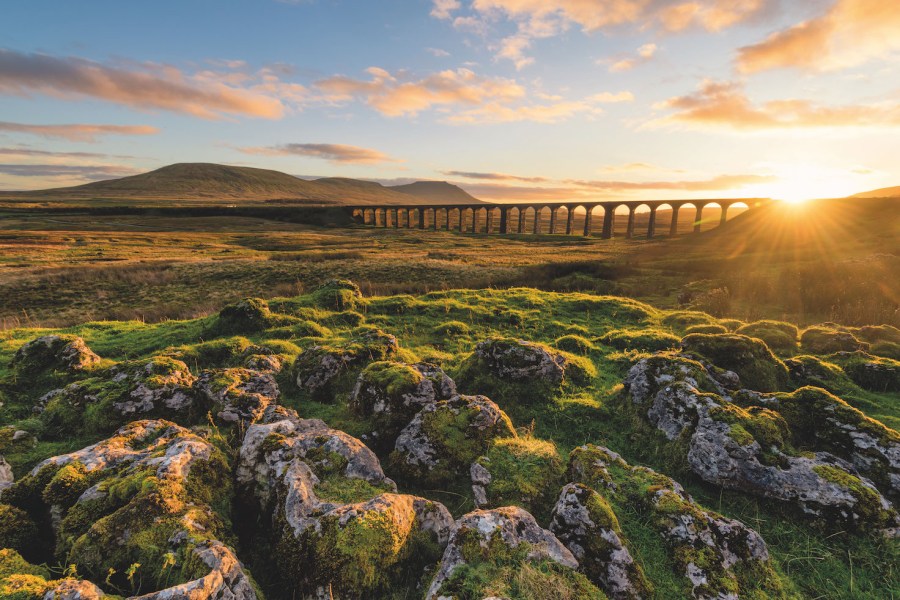Despite being Britain’s most ‘protected’ landscapes, biodiversity in our national parks is in decline. As campaigners make new calls for rewilding, Hanna Lindon investigates the issue.
Main image: Ingleborough and the Ribblehead viaduct, Yorkshire Dales. Photo: Shutterstock
Last week, Rewilding Britain issued a call for government action on nature-depleted national parks. The charity says that protected sites located in national parks are often in a worse condition than they are elsewhere, with key species missing or declining and decades-old laws hampering National Park Authorities’ ability to protect nature.
It suggests the government should create core ‘rewilding’ areas on public land across 10% of the national parks.
“Wilder national parks could lead the way for a healthier, more nature-rich Britain, with opportunities for communities and local economies,” said Guy Shrubsole, Rewilding Britain’s Policy and Campaigns Coordinator. “Nature would be in an even worse state were it not for the parks, but we’re being outpaced by the nature and climate crises.
“Despite some superb initiatives, the parks’ ability to upscale nature’s recovery and lead the way is being hobbled by decades-old laws dating as far back as the 1940s. It’s time for change. Without wilder national parks, the Prime Minister’s pledge to protect 30% of Britain for nature by 2030 is just not credible.”
Bleak picture
The notion that our national parks are failing to protect nature is nothing new. The RSPB’s Lost Decade for Nature report, published in 2020, found that national parks are consistently failing to deliver for biodiversity across the UK.
“In England, the conditions of Sites of Special Scientific Interest (SSSIs) is worse inside National Parks and AONBs than it is outside,” the report concluded. “Protected areas for nature on land are now in a worse state than they were in 2010 despite bold promises made by governments across the UK to improve them.”
The government’s own 2019 independent review into protected landscapes painted a bleak view of the state of national parks and AONBs, calling for England’s national parks to be made “greener, more beautiful and open to everyone.”
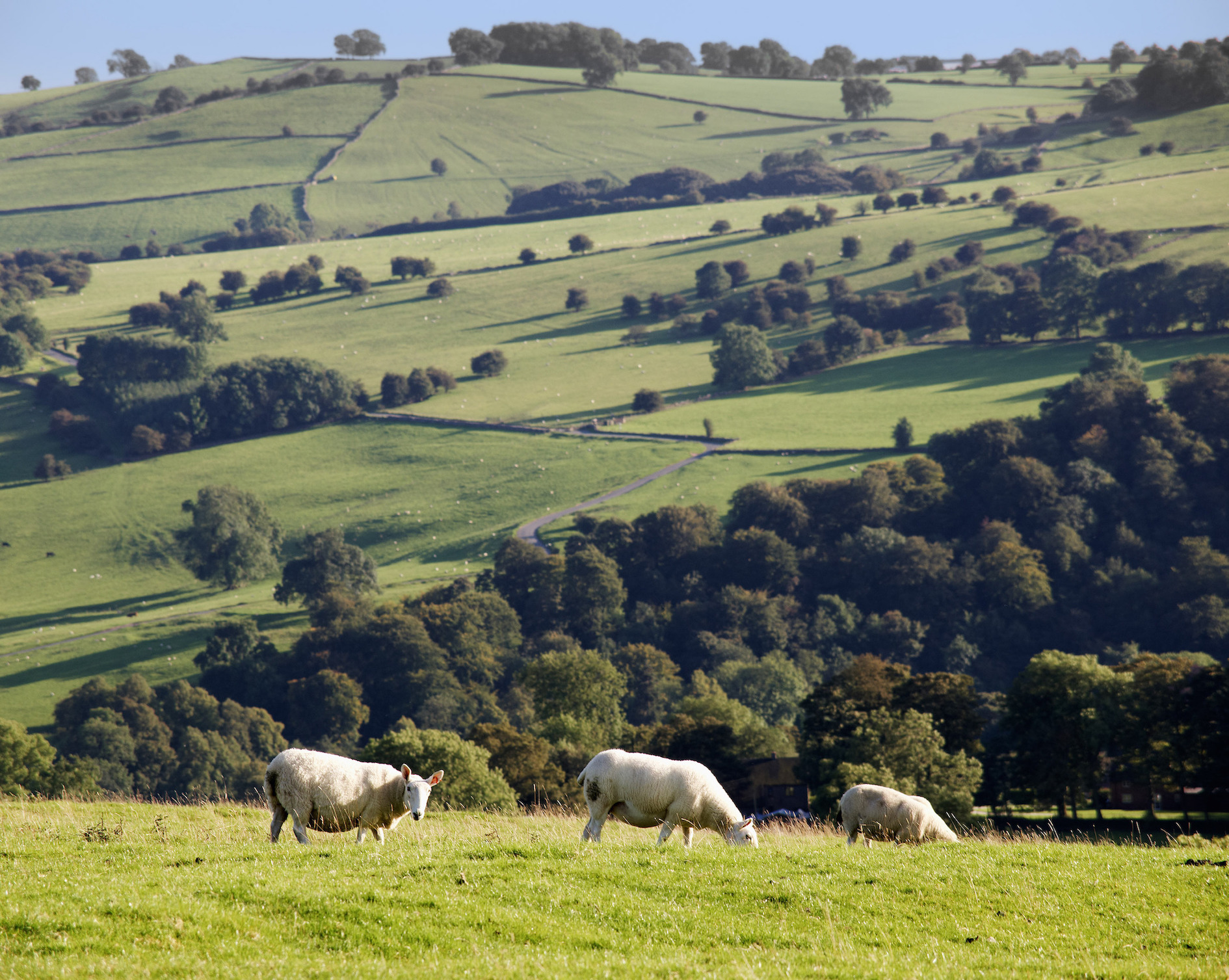
A typical pastoral farmed landscape in the Peak District national park. Photo: Shutterstock
Currently, it would be hard to claim that our national parks are managed primarily for the benefit of nature. Many are dominated by farmed landscapes – in the Peak District, for example, 90% of the national park is farmland. As a result, the World Conservation Union (IUCN) puts the UK’s national parks in category V, its second-lowest conservation category. It considers category II (Yellowstone in the US being one example) as the international standard for national parks.
False start
So what’s going wrong? Many conservationists argue that Britain’s national parks were primed for ecological failure right from the beginning. Even before the National Parks and Access to Countryside Act (NPACA) was passed in 1949, the remit of proposed protected areas focused mainly on planning controls.
“It’s the lead up to this legislation that really sets in place the character of national parks,” explains Mark Fisher, founder of Self Willed Land and a member of the Wildland Research Institute. “The Addison report, the first report commissioned on the potential for national parks in Britain, concluded that Britain was such a denuded country in terms of its nature that it didn’t need national parks such as existed in Europe and the US, but instead what it would have would be national reserves that had some kind of control over development as a way of protecting the scenic beauty of the countryside.”
Two further reports came to the same conclusion. As a result, the NPACA states that National Park powers should be used “for the purposes of preserving and enhancing the natural beauty of National Parks and promoting their enjoyment by the public.”
“The system of national parks was predicated on the basis that the national park authorities would control planning development and that was really the only power they had,” says Mark. “It was also predicated on the fact that the land would be used land – farmland. The assumption was that there was no need to have anything better than that because we didn’t have the wildlife the merited it. My argument is that’s incredibly defeatist.”
New urgency
The idea that fresh legislation is needed to redefine the remit of national parks has been around for decades. It was suggested in the 1991 Fit for the Future report, which also made proposals for wilder areas in national parks.
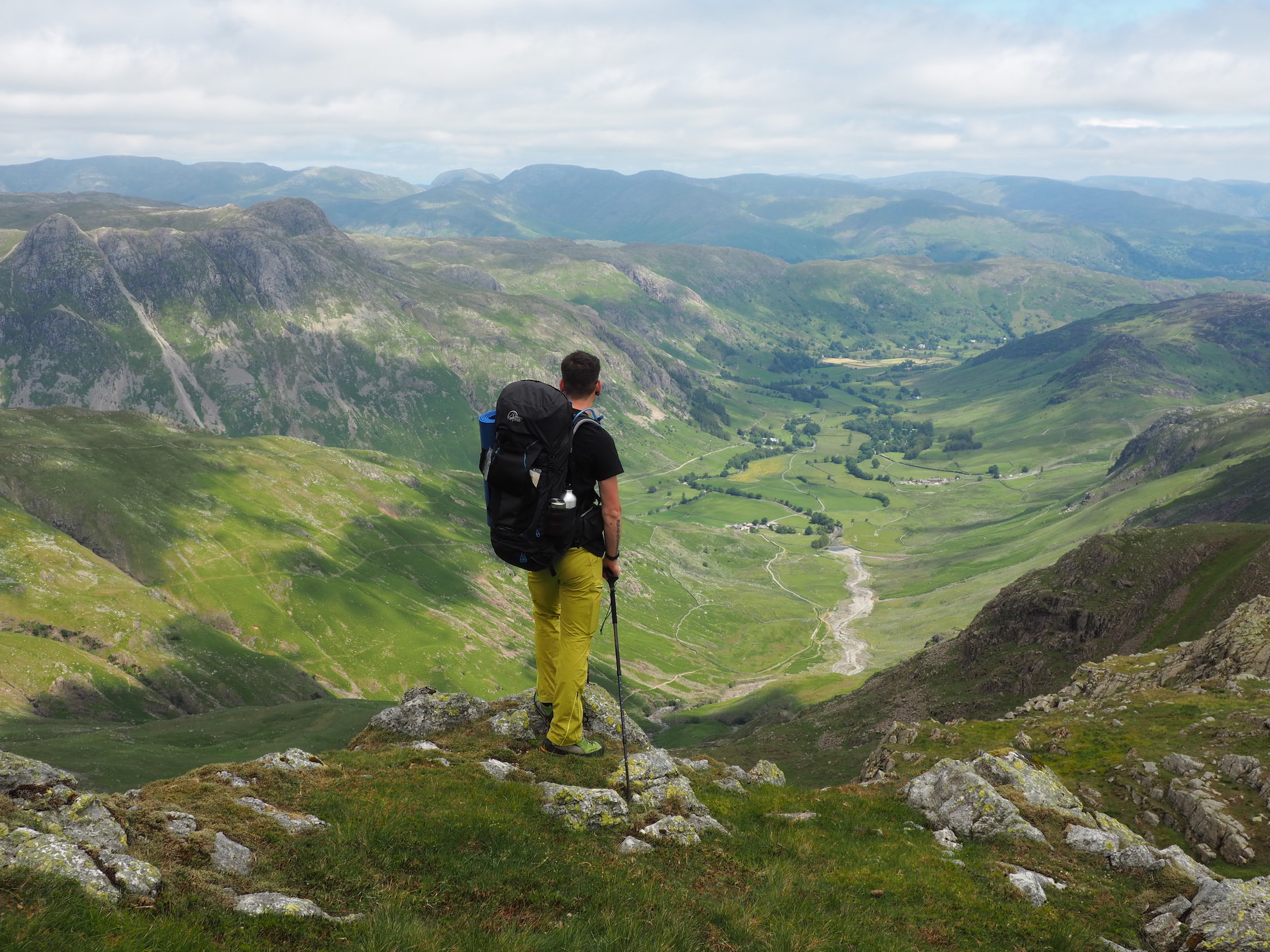
Looking out over Great Langdale in the Lake District national park. Photo: Carey Davies
In recent years the argument has acquired a new urgency. We’re currently facing an escalating climate and ecological crisis. According to the 2019 State of Nature report, 41% of UK species have dwindled since 1970 and the Farmland Bird Index has declined by 57%. In national parks and AONBs, biodiversity indicators have continued to decline since 2010 – in 2020, 39% of protected areas in England were considered to be in favourable condition compared to 2010 and Wales experienced an even more dramatic drop (Scotland has seen a 2% decline since 2007 but has the largest percentage of protected land – 18% – and the highest percentage of that land in favourable condition).
It’s an area in which many campaigners feel that national parks should have led the way – and have failed to do so. “England’s national parks have not risen to the challenge of the climate and nature crisis,” says Friends of the Earth trees campaigner, Danny Gross.
Why? According to the Glover review, it’s a case of national apathy. “The national zeal of the founding mission for landscape protection has been eroded,” says the report. “There is no common ambition and a culture which has neither kept pace with changes in our society nor responded with vigour to the decline in the diversity of the natural environment.”
The RSPB has gone further, arguing that “there has been neither the political will nor the resources” to address problems with the conditions of national parks and other protected areas. RSPB Director Emma Marsh has also criticised the appointments to national park boards. Pointing out that nature was only on the agenda at 3% of National Park Authority meetings, she said that the government had “failed to address the severe shortage of nature champions on many of these boards”.
Is rewilding the answer?
It’s clear that action is needed to restore declining biodiversity across Britain’s protected areas and fight the escalating climate crisis – and rewilding is one way of doing that. According to Rewilding Britain, a tenth of current UK greenhouse gas emissions could be sequestered by restoring and protecting six million hectares of native woodland, peatbogs, heaths and species-rich grassland. Empirical evidence from the country’s numerous rewilding projects suggests that it can also reverse biodiversity loss, and support nature-based economic enterprises.
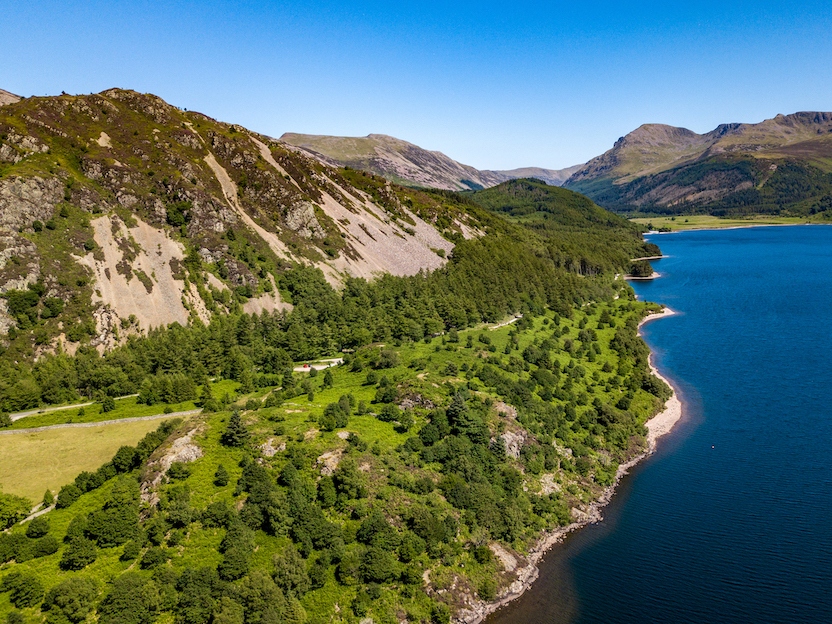
Ennerdale in the Lake District is the home of a 20-year-old ‘rewilding’ scheme. Photo: Shutterstock
Rewilding Britain also claims that the government can create rewilding areas across 10% of national parks regardless of action by private landowners, with peatlands, moorland, woods, rivers and seas restored with ‘no loss of productive farmland’.
“Public bodies and water companies own 13% of national park land in Britain,” says Guy. “This is a way for the government not just to talk about wilder national parks but also to show the public sector is meeting the challenges of the 21st century and following the lead that’s being set by many pioneering third sector private landowners. They are already rewilding within national parks [examples include Wild Haweswater and Wild Ennerdale in the Lake District, Ingleborough National Nature Reserve in the Yorkshire Dales, and Creag Meagaidh and Mar Lodge in the Cairngorms] but they want to see the public sector upping their game.”
The suggestion has been greeted with caution by National Parks UK.
“Our national parks already provide a place for nature’s recovery and we’ve recently set out our roadmap for how they could be even better places for wildlife with our Wildlife Delivery Plan,” said Sarah Fowler, the Peak District National Park Authority’s CEO and a coordinator of the UK National Parks nature recovery programmes. “Delivery of this requires shared action, as our national parks are living, working landscapes with the vast majority of land in private ownership. We welcome the sentiment for wilder National Parks and are working in partnership nationally and locally to secure the resources and policy tools necessary to bring about landscape-scale nature recovery.”
The bigger picture
When it comes to restoring biodiversity in our national parks, many conservationists feel that rewilding 10% of protected areas is unlikely to be enough. Rewilding Britain has called for another 50% of parks to consist of ‘nature recovery areas’, built on government financial support for nature-friendly agriculture.
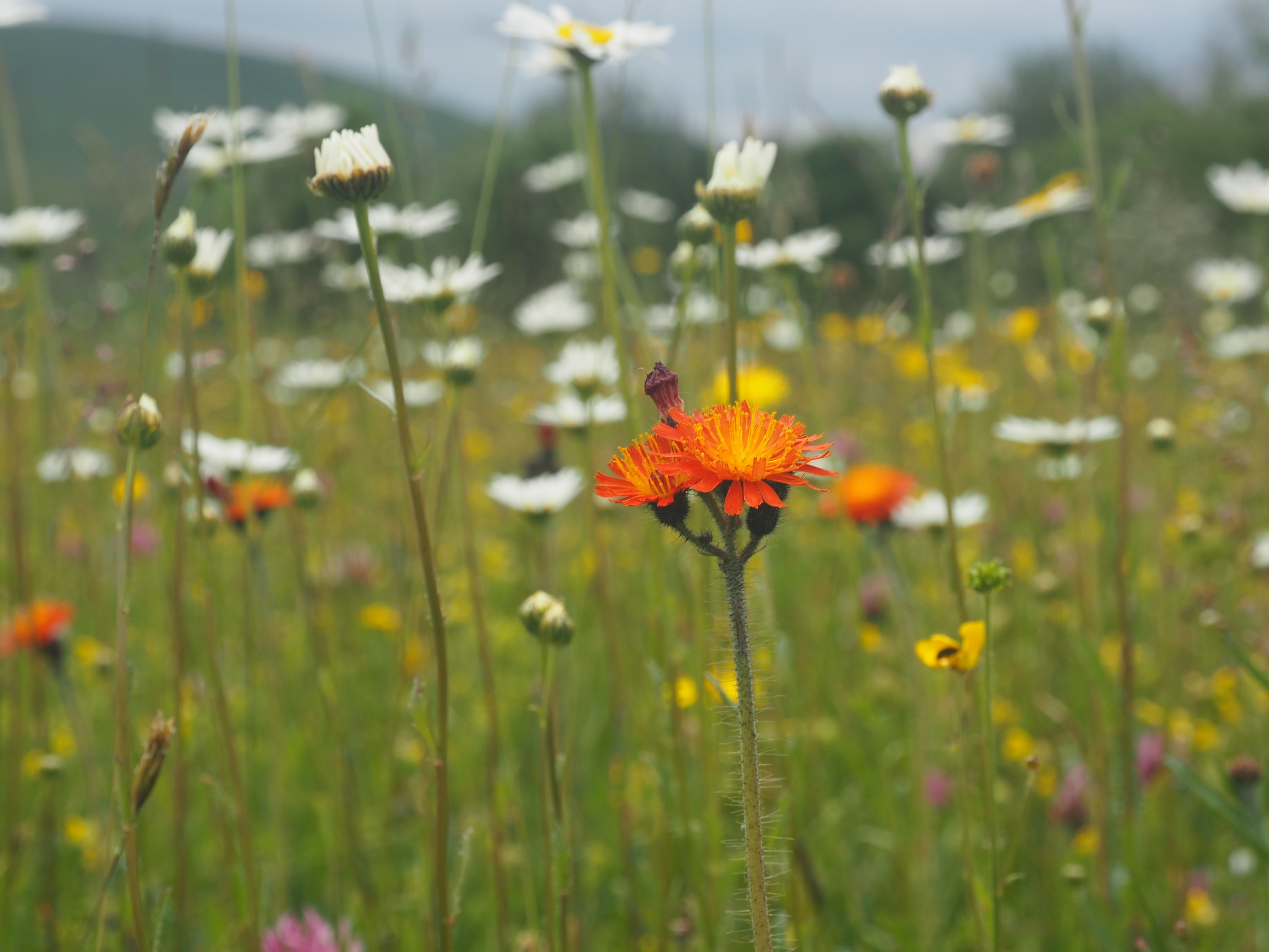
A surviving species-rich meadow in the Yorkshire Dales national park. Photo: Carey Davies
According to the RSPB, changes in farmland management over the past 50 years have been a key factor in declining biodiversity. And the Glover Review is clear that Britain’s system of landscape protection has been hampered by having little influence over “a system of farming subsidies which, although it has improved, for decades rewarded intensification regardless of the consequences.”
An NFU spokesperson contacted for this article said: “Farmers play an integral role in shaping the cherished landscapes we see and enjoy in our national parks today. With more than 30,000km of hedgerows have been planted or restored, farmers already work hard to encourage wildlife, the landscape, benefit soil and water, and reduce their impact on the climate.”
Some campaigners are hopeful that the government’s proposed overhaul of farm grants – which will see farmers incentivised for providing ‘public goods’ such as protecting water supplies, capturing carbon in soil and increasing wildlife – could help restore biodiversity across national parks and in other areas of the country. Others are more sceptical.
“Subsidies don’t tie people in for perpetuity,” says Mark. “If a farmer decides to do something different then he can – and anything that’s been paid to him is millions of pounds out of the window.”
He argues that rewilding public land is the way forward – and not just in national parks.
“If we turned public subsidies into land purchase then it would only take us 11 years to buy the whole of the uplands,” he says. “Nobody in the power and ownership structure of this country will allow that to happen. But what we should be doing is saying ‘what do we have in our portfolio of public land where we can start making a difference for nature?’
“The idea of rewilding public land is a good idea, but picking on national parks just muddies the water.”

